Clear coat peeling paint - Help!
This happened to me earlier and I thought I had not let everything cure long enough before shooting clearcoat onto a car. But this time I waited a few days and let everything bake under a warm lamp. So, my question is, why is the clearcoat still peeling the paint off of my car?
Thanks for any help!
Some details on steps/products over a couple weeks:
Stripped with Citristrip gel. Washed thoroughly and dry thoroughly. A few very light coats of gloss enamel spray paint. Water slide decals with Mr Hobby mark setter and mark softer. Everything's looking good until the first coat of Rustoleum 2x Clear Gloss goes on and starts peeling! Everything kept above 55F.
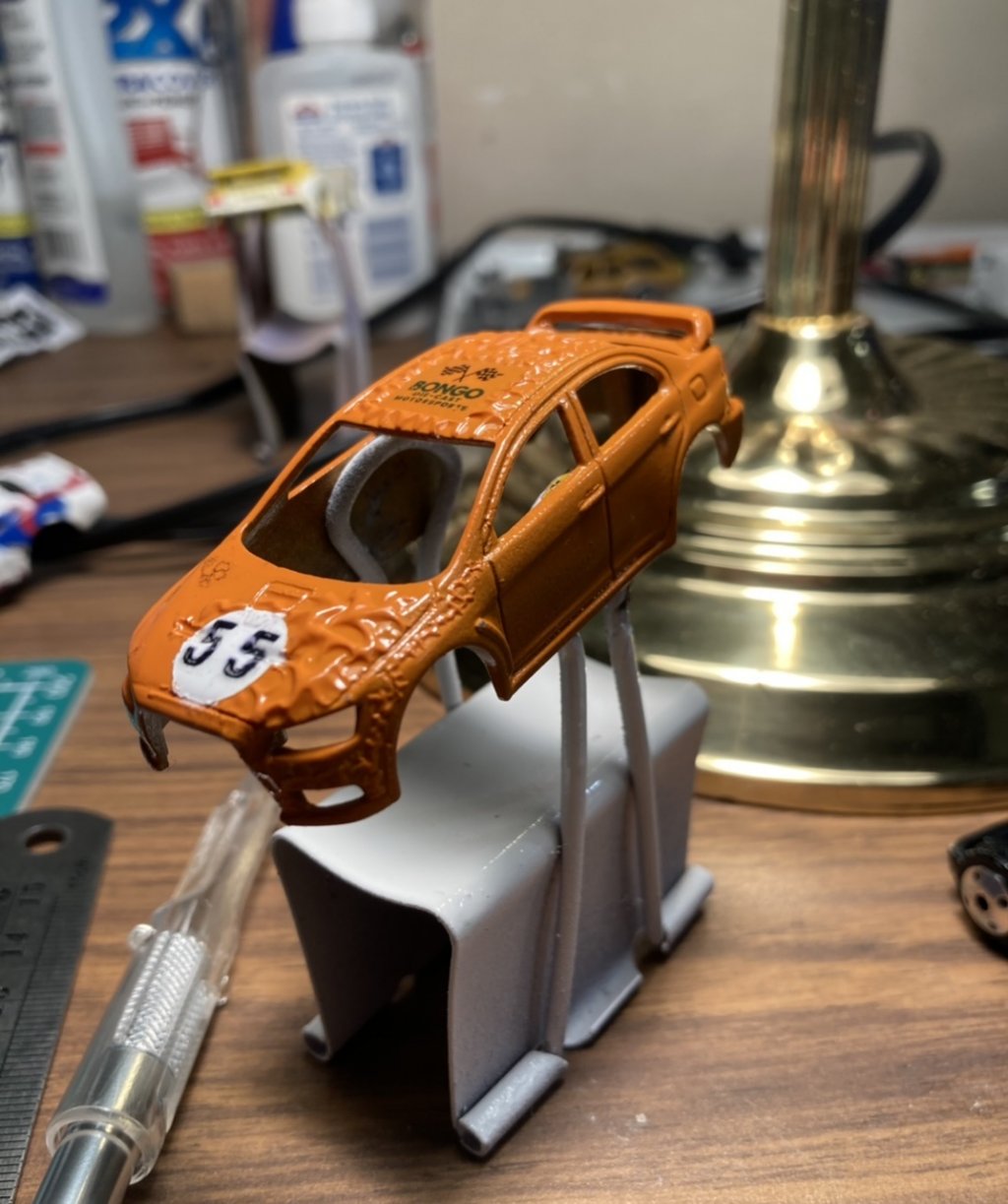
Discussion
It has been humid/ rainy! But not for about 24 hours. I was going pretty light I thought. Anyone have an Rh level for shooting paint or clear coat outdoors? I forgot to mention I've used all of these exact bottles and cans before without this happening. I need to see if I can figure out if rain/humidity could have affected the previous car when this happened.
Acrylic vs enamel paint I'm betting. I have had the same issue. Look closely at your paint and make sure it's the same kind
It sounds like whatever the thinner is in the clear coat it's reacting with the base coat. Generally if you stick to the same paint system you should be ok but if this keeps happening then do a bunch of test pieces on some scrap material and see what happens.
I used to be a spray painter and this used to happen occasionally if you accidentally put a different top coat over the primer of a different brand. I presume you aren't mixing arctic and enamel, that is the most common cause although I do that and don't get this issue.
Almost guarantee your clear is a different type of base than your paint. Enamel paint with lacquer clear will do this. Mixing different types of paint doesn't come out well :/
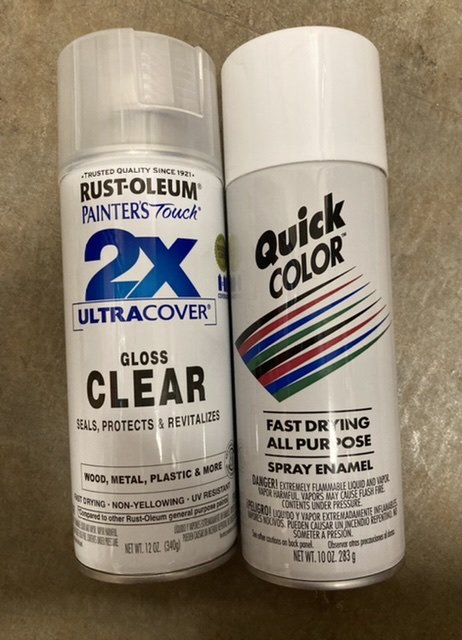
This was my first problematic pairing. This was the combo of paint I shot on my Beamer Blitz BMW and sent it in. 
The exact combo of materials was just fine on a previous car I sent for the 1980s race at down squad.
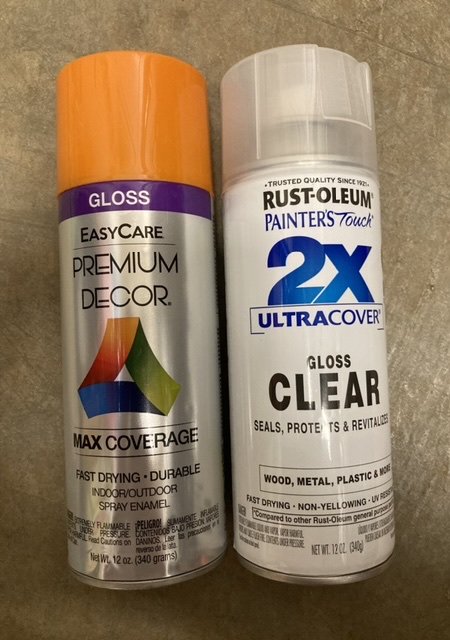
this is the combination I used on the Evo at the beginning of this thread. I think that was my first with the orange paint. But it was the same clearcoat. The Rustoleum 2X cans do not say whether they are enamel or acrylic. Some online vendors label them as enamel.
So, this afternoon, when it is over 80° and under 40% humidity I made a little experiment. I put a decent stripe of spray paint on a piece of coroplast and laid out samples of all my different brands and ages of paint. I scored some very old $1 cans at an estate sale not long ago. I let them dry for an hour or so in the shade and put a thick coat of clear coat on them. Nothing wrinkled. Nothing bubbled up. So it must've been too humid and wet. I may repeat the test if I see a super humid cool evening coming up.
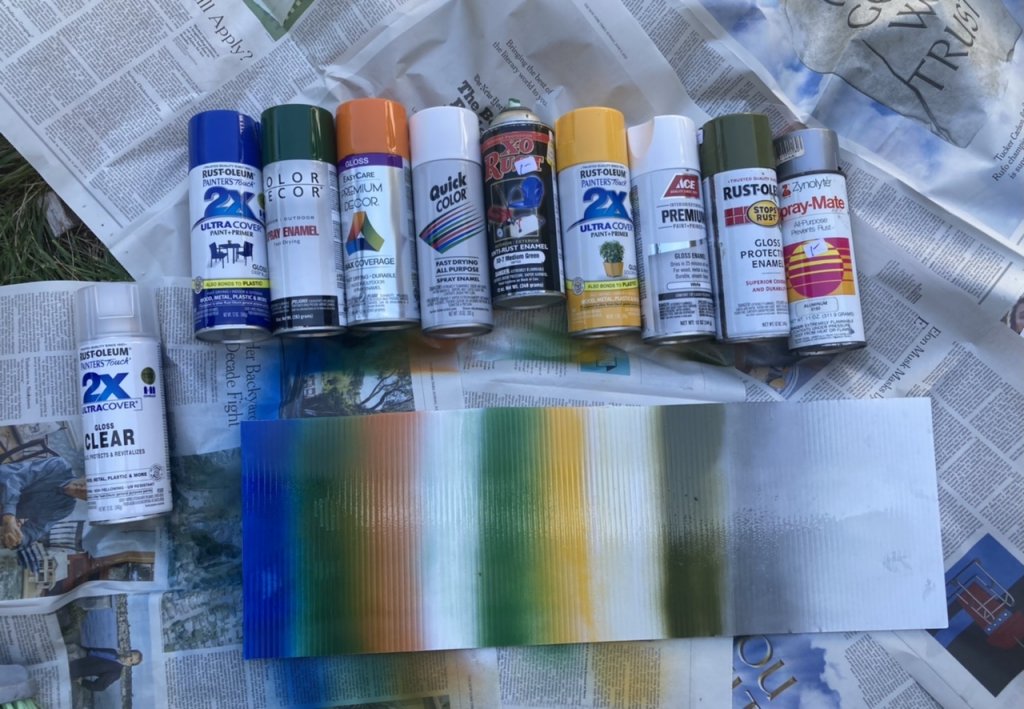
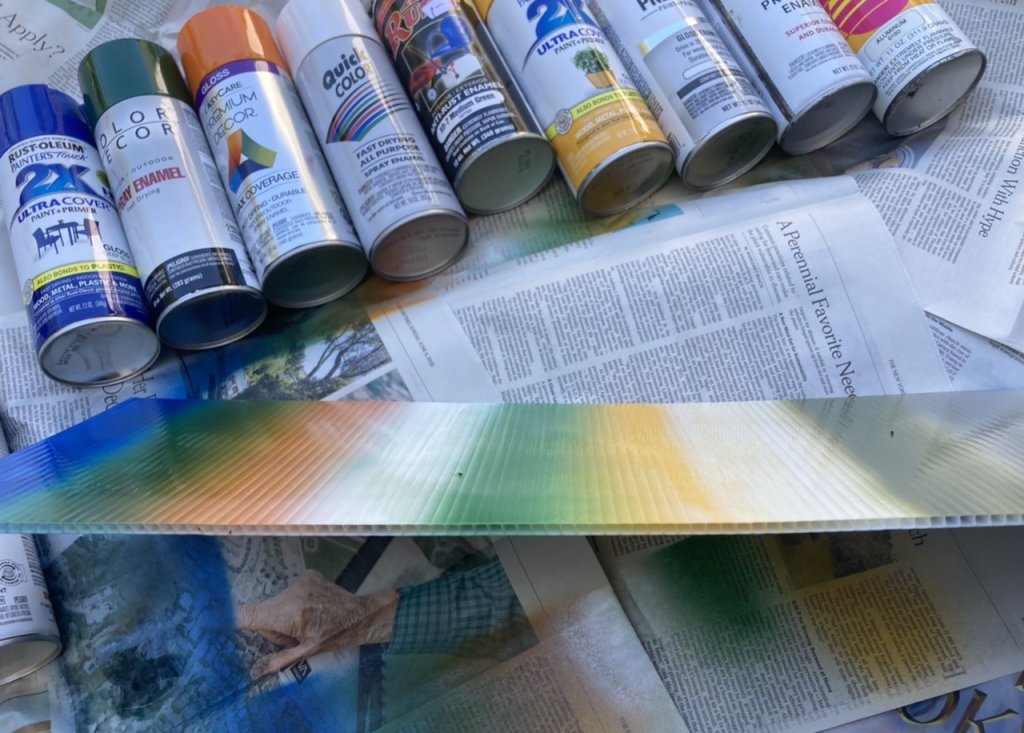
So, I need to plan my paint times a little better. I have far more free time at night than I do on warm afternoons to paint cars.
- Get a cheap food dehydrator and throw the bodies in there to speed up the drying. Coroplast also probably reacts different than the metal bodies to the paint. — revhobbies
- I used the coroplast panel because I wanted to get a lot of paint side-by-side and I had supposed that with the plastic being less absorbent than the pot metal car bodies, whatever moisture was in the air would settle more on the surface of the plastic to interact with the various paints and such. Admittedly, I’m no scientist so this may have been wrong from the start. Looks like there’s a $15 used food dehydrator nearby in my future. Great suggestion! — Bongo
- I use a $5 goodwill toaster oven set to 200*F leave it in for and half an hour or so. DO NOT use your wife's toaster oven, she will not be happy with you.... — Redline_Salvage_Inc
I went throught this same painful process. I learned this simple process that never fails.
3 coats of paint the same paint same color- 1st coat is extremely light and thin! wait 15 min. 2nd coat is extremely light and thin! wait 15 min. 3 coat is still light but ensures that you have covered the car completely and evenly.
Now WAIT! 24 hours is safe, 48 is even better
Now you can proceed to use a different color of paint or clear coat
Now clear coat (Clear coat you can do many coats because it will protect the thin paint.) Light coat, wait 15 min, med coat, wait 15 min, med coat. And if you want more coats repeat
Yeah, you must pay attention to type of paint and the base material being painted.
I have not yet dealt with acrylic or polyurethane but they are (as I understand it) two part plastics suspendended in water. When the water evaporates the molecules link up to form a skin over the part with minumal chemical bonding to the base. The main problem, I would think, is dealing with the high suface tension of water, that is getting water based paint to lay flat evenly over the part.
All paint is plastic, thus when painting plastic on plastic, the bond by the solvents is stronger. The type of plastics and hence paint determine the results based on how strongly the base coat is affected by the top coat which is governed (mostly) by the solvents in the paints. I think the "2X" on the can refers to a "self-etching" paint. This "etching" refered to is a chemical solvent designed to strongly affect old paints and plastics that have had years to harden. (UV rays hardening) Anyway, using this 2X as a top coat will tend to emulsify the lower layer. Depending on the types of plastic in the base you will get a certain amount of seperation and expansion.
Especially! When painting on Zinc. There are two problems when painting on zinc. First is the rapid oxidation of bare zinc and the second is that there is no strong chemical bond between the zinc and the paints. The bond between them is mechanical of two types. The tooth left behind by sanding and the sheath as the paint (plastic) forms a continous skin around the part. The oxidation by the zinc separates the mechanical bonds at the molecular level, thus allowing the paint to chip off. A passivity layer is needed to stop the oxidation. That used to be Zinc Chromate but nowdays it seems to be done by using a plastic sheath with some zinc chromate mixed in.
So, to answer your question when painting a project paint out a test on the same substrate using all the layers planed. Some paints will go on top of others just fine, but will act terrible when used under them.


Too heavy of a clear coat?
I use the 2x stuff, but I usually put 2 or 3 very light coats on first before the final good coat...but I try to keep it as light as possible...also, has it been wet/humid when you sprayed?